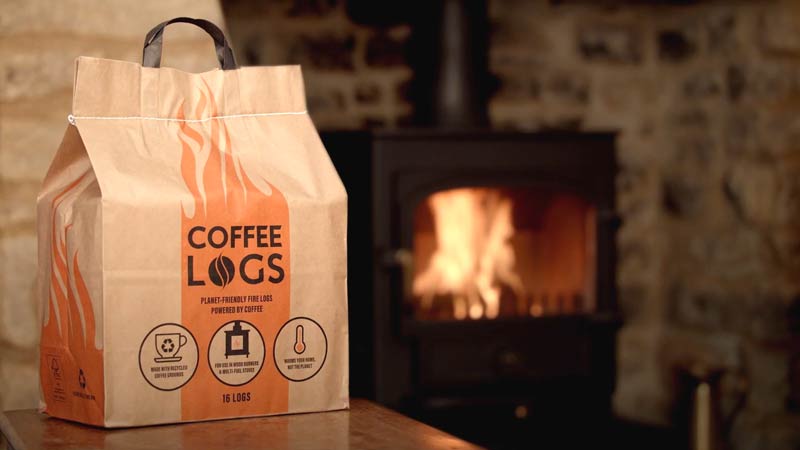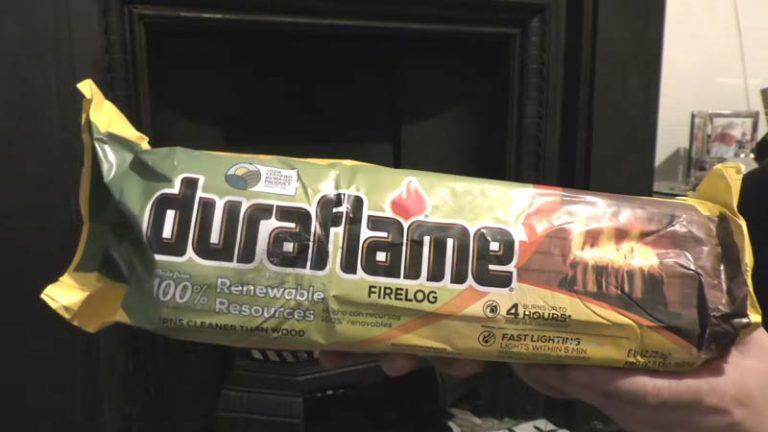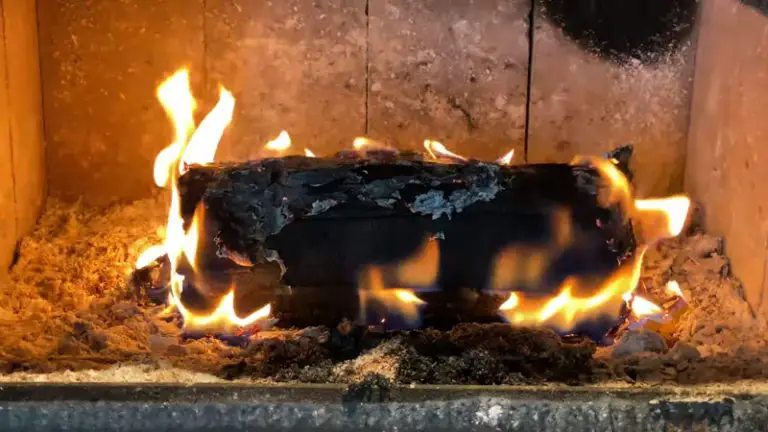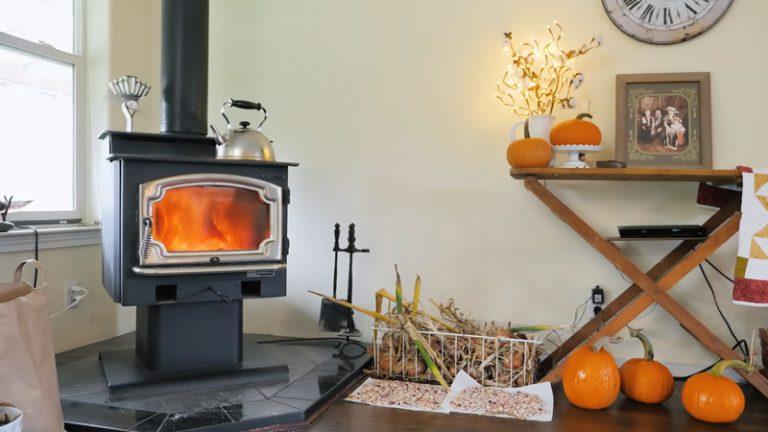Can You Burn Coffee Logs In A Fire Pit

If you want to use a coffee log as an accessory for your barbecue, fire pit, or chiminea, be aware that these items are not authorized for burning in smoke control areas.
Coffee logs can cause wildfires if they’re placed near open flames – never leave them unattended around any kind of outdoor fire. Make sure you keep your coffee logs out of reach of children and other pets who could easily start a wildfire with them.
The Environmental Protection Agency (EPA) recommends keeping all wood products away from smoke detectors and outside air intakes when there is potential for high levels of carbon monoxide exposure. Even activated charcoal filters may not be effective at removing this gas type safely enough.
Keep your family safe by following the guidelines set forth by the EPA when using any kind of outdoor fire – including those made with coffee logs.
You'll Learn About
Can You Burn Coffee Logs In A Fire Pit?
Always check with your local fire department before burning any kind of logs outdoors – they are not appropriate for barbecues, fires pits and chimineas.
Coffee logs are only allowed in smoke-controlled areas such as factories or workshops. If you need to dispose of a burned coffee log, do it responsibly by throwing it into the garbage instead of setting it on fire again.
Keep your barbecue safe and clean by following these simple guidelines: don’t use coffee logs; dispose of them properly if you burn them; and enjoy your backyard BBQ without worry.
Authorized For Burning In Smoke Control Areas
The heat of a fire pit can easily ignite logs that are not authorized for burning in smoke control areas. Burning coffee logs is illegal and could lead to fines or even jail time if you’re caught.
Make sure your logs are labeled as such so you don’t get into trouble with the law. If you do decide to burn them, be extra careful and only use small amounts at a time until you know how they will behave in the fire pit set.
Always check local regulations before lighting up – sometimes there may be specific restrictions on what type of wood can be burned in an area.
Not Suitable For Some
If you’re looking to roast your own coffee beans outdoors, don’t use coffee logs – they won’t burn effectively. Wood chips, chunks or kindling are the best materials for barbecuing with charcoal and open flames; using coffee logs is not recommended.
Coffee logs may work in a fireplace if it’s small and well-maintained, but they’re not suitable for larger outdoor fires that can get too hot or dangerous. You should never allow wet woodchips or coal to smolder near any part of your body.
This includes around a firepit or BBQ grill where residue from burning wood could cause serious burns or injury. Always have an emergency flare kit on hand in case of emergencies when grilling outdoors – including around a fire pit and/or barbecue grill.
Are coffee logs suitable for open fires?
Coffee logs, also known as firewood, are made from dried coffee beans that have been treated with a sealer. This makes the wood resistant to moisture and insects.
While these logs can be used for open fires, it is important to take care when burning them because they produce large amounts of smoke. If you’re looking for a fuel source that is safe to use around open flames, coffee logs are definitely the perfect option.
Coffee logs produce good heat and will last longer than wood logs. They are also safe to use as fuel in a wood-burning stove or fireplace. Make sure that your firewood is dried out before using it as coffee log fuel – wet firewood can cause sparks and start fires when burned.
When burning coffee logs, be aware of wind conditions – strong winds may blow the hot embers from the fire directly into your eyes. Keep an eye on the temperature of your coffee log burners – too much heat can cause them to malfunction or even catch on fire.
Can you use coffee logs in a chiminea?
Yes, you can use coffee logs in a chiminea. Place two firelighters on the appliance bed and cover with kindling. Add two or three Coffee Logs to the appliance bed.
Light the firelighters and enjoy your warm fireplace.
Do coffee logs pollute?
Many people think that coffee logs pollute the environment. This is not always true, though there are some precautions you can take to reduce the impact of your coffee on the environment.
Coffee Pollutes More Than Traditional Firewood
Coffee is an extremely polluting plant, which releases harmful gas emissions when burned. In fact, coffee logs are more polluting than traditional firewood, as they contain higher levels of carbon dioxide and other pollutants. This pollution can cause dangerous air quality problems in your home and neighborhood, as well as endanger your health.
Eco Logs Are More Polluting Than Firewood
Eco logs are made from a variety of trees that have been dried out naturally without the use of chemicals or heat. While eco logs may be less polluting than traditional firewood, they still release significant amounts of toxins into the atmosphere when burned. These toxins can lead to environmental damage and serious respiratory illness if inhaled in large quantities.
Cause Air Pollution And Dangerous Smoke
When you burn eco logs, you’re releasing dangerous smoke particles into the environment which can impact both people and animals living nearby. These toxic fumes also pose a risk to public safety due to their ability to create hazardous air conditions.
Can Release Hazardous Chemicals
The bio-degradable materials used in eco log burning can often release harmful chemicals such as dioxins and furans into the atmosphere when burned improperly .
These chemicals are known carcinogens and are capable of causing major harm to human health over time.
Do coffee logs give off co2?
Coffee logs do indeed give off CO2 when burned, but the levels are very low. Typically, the amount of CO2 produced from burning coffee is about 0.05% to 0.15%.
Coffee logs do not produce as much CO2 emissions when compared to coffee grounds being sent to landfill. When coffee beans are roasted, the process of breaking down cellulose releases methane and carbon dioxide.
The main way that these emissions are reduced is by sending the coffee grounds to anaerobic digestion instead of landfill. Another way in which this emission is reduced is through the roasting process itself- during combustion, gas molecules escape from substances at high temperatures (above 600 degrees Fahrenheit).
This gas includes both CO2 and water vapor, but because it contains less oxygen than air, it produces coke (carbon) deposits on objects such as wood or paper products.
Can you burn coffee?
If you’re looking to enjoy a cup of joe, be sure to make it fresh. Boil water and pour it over ground coffee before brewing. Brewing too much coffee can result in an unpleasant burnt taste – avoid this by using boiled water when making your coffee and don’t over brew it.
Once you’ve enjoyed your freshly brewed cup of joe, keep it warm by storing the mug in a warm place or pouring hot coffee into a thermal mug for on-the-go drinking pleasure. Finally, store your beans in an airtight container to preserve their flavor and aroma for future use.
Are coffee logs DEFRA approved?
Yes, coffee logs are approved for use in the UK as a monitoring tool for pest activity. They work by releasing a scent that attracts pests and allows you to monitor their movements.
New to the solid fuels category
These fuels sit outside of traditional classifications like coal and wood. Certification schemes aren’t required for these types of fuel. So they might not be subject to domestic emissions regulations.
Even though these fuels don’t fall under traditional classification schemes, they still affect air quality and it’s important to check with your local authority before burning them.
Domestic Emissions Regulations Aren’t Based On Classifications Like This
The emission standards that are in place for conventional diesel engines won’t necessarily apply to these new fuel types. Instead, each country will have its own set of rules governing their use. This means that there is a risk that these fuels could cause environmental damage if used improperly.
Air Quality Might Still Be Affected
Even though coffee logs don’t fit into typical categories like coal or wood, they do produce pollutants when burned as a fuel source. If you’re using these materials as an alternative heating option, make sure you’re following all safety precautions and consulting with your local authorities first.
What’s the best fuel for fire pits?
Make sure your fire pit is well-maintained and avoids using treated wood as the fuel. Choose quality firewood that is dry and free of damage before purchasing it.
Inspect logs before you purchase them to make sure they are not damaged in any way, making for an even burn every time you use your fire pit. Leveling your fire pit ensures a pleasant experience when enjoying roasting marshmallows or building a campfire with friends.
To Recap
Whether you can or cannot burn coffee logs in a fire pit depends on the type of fire pit and the coffee logs. Generally, any combustible material (like wood) should not be placed in a gas-fired grill or fired up in an open flame due to potential safety hazards, but this varies depending on your specific grill/firepit setup.
If you have questions about whether burning coffee logs is safe for your particular fire pit, contact the manufacturer or retailer who sold it to you.






